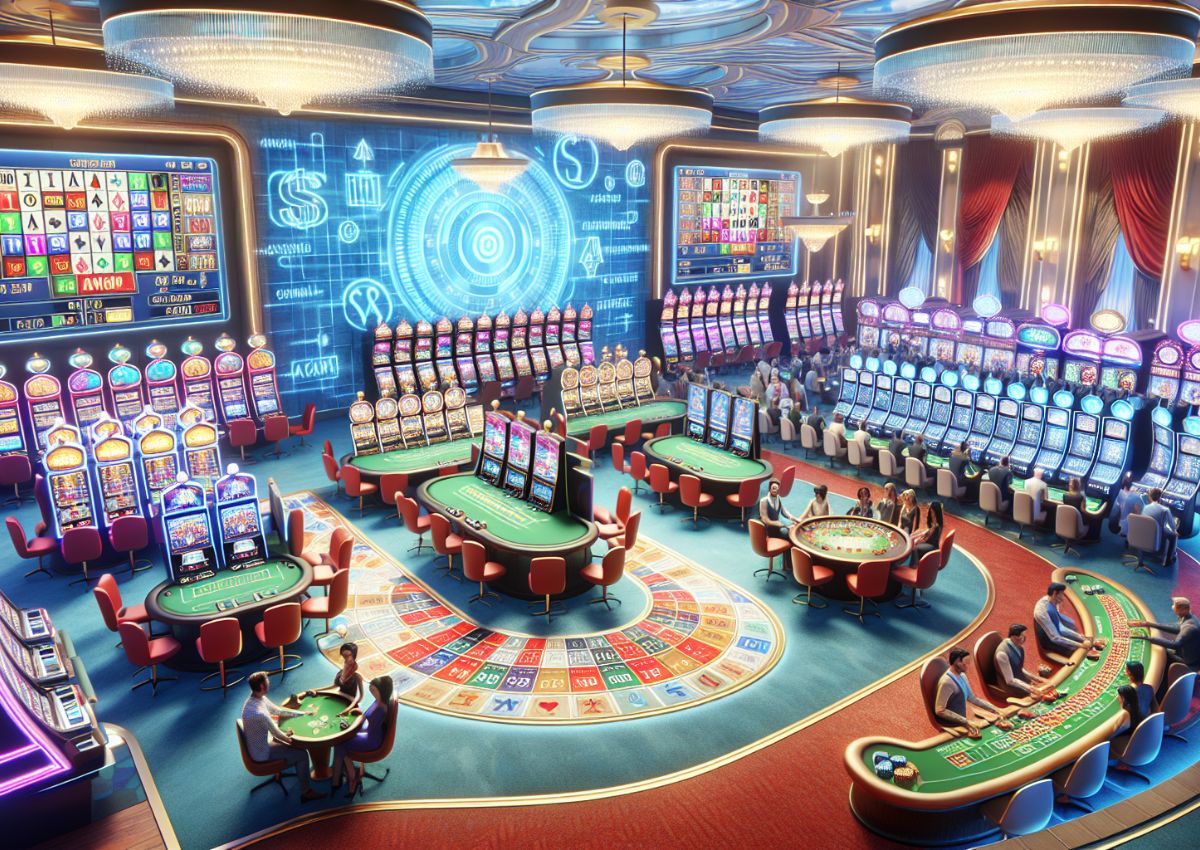In what way Gambling Games Use Color and Design to Attract Players
admin
- 0

Within a vibrant and exciting world of casinos, wherein luck and strategy intertwine, color and design play a key role in drawing in gamblers. As soon as players step inside a casino or access a gaming website, they are enveloped in a sightly feast that captures their attention and lures them to explore more. Vivid colors, captivating graphics, and creative layouts are meticulously crafted to create an atmosphere of thrill and anticipation, ultimately enhancing the gaming experience.
While gamblers move through the dynamic landscape of casino games, they encounter a range of designs that not only serve visual purposes but also influence emotions and choices. Hues like scarlet and yellow symbolize riches and fortune, while soothing blues and emeralds can create a more tranquil environment. Understanding how these elements function together enables casinos to create an inviting and energizing atmosphere that encourages players to engage with the games, spend more time at the tables, and increase their general enjoyment.
The Psychology of Color in Gambling Games
Tint plays a key role in the development of gaming experiences, affecting players’ emotional states and actions. Lively and bold hues, such as scarlet and amber, are often used to incite enthusiasm and capture focus. These hues create a feeling urgency and energy, encouraging participants to participate more enthusiastically with the game. By strategically selecting tints, developers aim to elicit emotions of satisfaction and expectation, which can enhance the total player experience.
Distinct hues also have psychological associations that can affect how gamblers perceive their chances of success. For case, emerald is often associated with good fortune and wealth, making it a well-liked choice in activities like roulette and poker games. This connection can lead gamblers to feel more hopeful and assured in their play, ultimately motivating them to wager more. Understanding these links allows game designers to design environments that enhance player happiness and engagement.
In addition, the design of gambling game interfaces often employs blended colors and opposing colors to guide players’ responses. For instance, successful results may be highlighted with vivid, differing hues, creating a visual cue. This technique reinforces favorable outcomes and promotes repeated gameplay. By utilizing the psychology of color, casinos can design games that not only draw participants but also maintain them involved and committed in their gaming experience.
Design Features that Engage Gamers
The visual appeal of gambling games is largely influenced by the use of bold colors. Lively and striking colors are deliberately chosen to create an appealing atmosphere that captures interest. For instance, crimson and golds often signify luck and prosperity, which is why they are prevalent in the palettes of gaming machines and game surfaces. These colors not only draw players in, but they also evoke emotions related to excitement and expectation, enhancing the overall gaming experience.
In parallel to color, the design and layout of casino games play a crucial role in captivating players. Games are designed to be intuitive, ensuring that players can quickly understand the rules and mechanics. Accessible interfaces, along with captivating graphics and motion, help maintain gamer interest and encourage extended play sessions. The physical elements, such as the feel of the controls and the sounds of the games, also add to a comprehensive sensory experience that keeps players immersed.
Finally, conceptual elements in game design can greatly influence gaming decisions. Many casino games are inspired by media, fairy tales, or exploration motifs, featuring symbols and characters that resonate with players. These themes create a sense of immersion and relatability, making each game feel distinct. When players feel a connection to the theme, they are more likely to choose that game over others, leading to increased participation and excitement within the gambling environment.
Case Studies: Notable Casino Slot Designs
One noteworthy example of impressive gambling game design is the popular slot machine series themed around hit movies. Games such as those based on the The Wizard of Oz and Game of thrones utilize vibrant colors and top-notch graphics to enthrall players in well-known narratives. The use of lively visuals and entertaining sound effects takes the interest of players, establishing an affective connection to the theme. This strategy not only fosters longer play but also enhances the overall gaming experience, yielding increased player retention.
Another successful case is the application of color in table games like 21 and roulette. Casinos often develop these games with dark reds and greens, colors traditionally connected with luck and wealth. For instance, the green felt on a blackjack table provides a relaxing effect, while the crimson accents in roulette invite thrill. This deliberate use of color helps to foster an inviting atmosphere that motivates players to engage, satisfying their psychological impulses and increasing their enjoyment.
Finally, online casino games that incorporate social features and lively, dynamic designs have seen remarkable success in engaging players. Games like Zynga Poker and Slotomania leverage striking colors and playful animations to forge an inviting online environment. The integration of leaderboards, community sharing options, and in-app rewards fosters competition and community, pulling players in for longer sessions. online casino without verification Such designs not only make the games visually appealing but also underscore social connectivity, a key factor in player retention and engagement within digital casino environments.